Back pain, and especially lower back pain is one of the most common kinds of pains experienced by the general population, covering a staggering 80% according to some research. Apart from being a common ailment, it is also one of the most confusing ones as one does not what should and should not be done while one has back pain. Some people consider a total lack of exercise to be the remedy while others recommend doing exercise to strengthen the muscles.
The truth lies somewhere in between as either lack of exercise or the wrong ones can totally ruin your chances of recovery. But more important is avoiding the exercises that actually worsen your situation. For this, here is a list of 9 such exercises to avoid for lower back pain. Given with them, along with how they are done, is why they harm you so that you get a better picture of the possible damage.
9 Exercises to avoid for lower back pain
1. Situps
 Sit ups is a core exercise that involves you lying on the floor with your hand crossed over your chest or behind your head and then lifting up your upper body (till the hips) up to meet the knees.
Sit ups is a core exercise that involves you lying on the floor with your hand crossed over your chest or behind your head and then lifting up your upper body (till the hips) up to meet the knees.
While the exercise strengthens the abdominal muscles, more often than not people tend to use their back and hip muscles in trying to move up. If you have back pain, you put undue pressure to the already weak back, especially on the discs in the spine, which puts it in great danger.
Alternative:
An alternative to this strenuous exercise is the partial crunches. Which is a mild form of the regular crunches. To do this exercise, lay down on the floor with your knees bent and feet flat on the floor. Place your hands either behind your head or cross them over your chest. Now raise your shoulder slowly till they don’t touch the mat. Hold this position for a few seconds and then slowly return to the starting position. The hip and lower back remain unmoved (not lifted from the ground) all the time.
2. Leg lifts
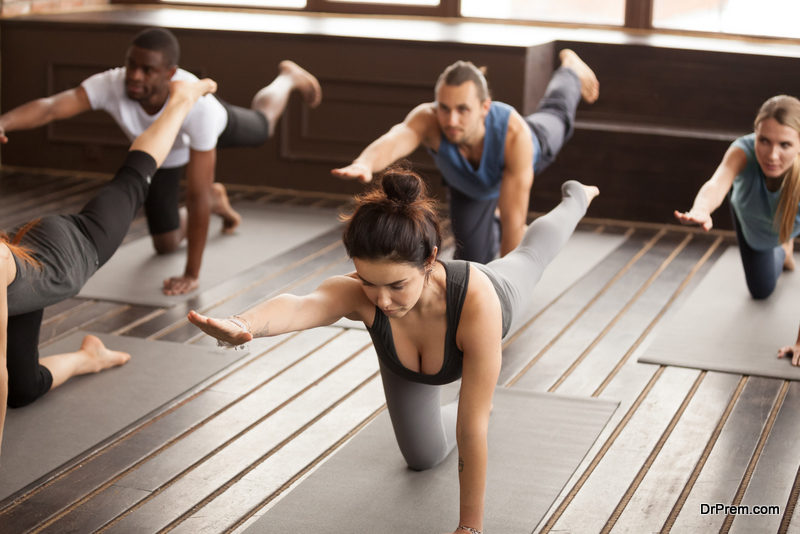 Leg lifts is another ‘strengthening your core’ exercise which is very effective in making your trunk (abdomen) strong. The exercise involves laying down flat on the floor and the lifting both the legs simultaneously up in the air and holding the position for a few minutes.
Leg lifts is another ‘strengthening your core’ exercise which is very effective in making your trunk (abdomen) strong. The exercise involves laying down flat on the floor and the lifting both the legs simultaneously up in the air and holding the position for a few minutes.
This exercise of lifting the legs together from the hip joint creates a great amount of pressure on the lower back, which has to support the weight of both the legs now. This aggravates the pain in the lower back. Hence, leg lifts are one of the most basic exercises to avoid for lower back pain.
Alternative:
The alternative to this exercise is a simple one. Instead of lifting both legs up, try bending one knee and lifting the other leg to a height of 6 inches and slowly returning to the ground. Then switch the legs.
3. Toe touches – one of the most crucial exercises to avoid for lower back pain
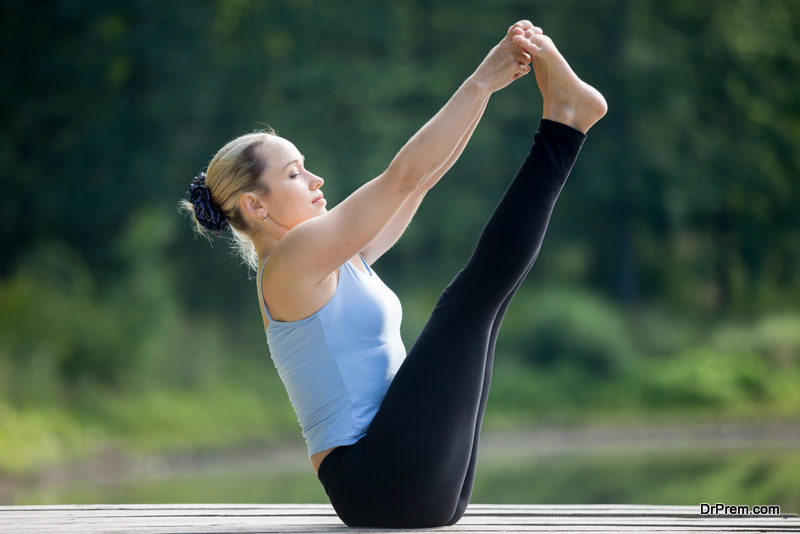 Standing toe touches, in which you stand tall and then bend to touch your toes without bending your knees, is a classic example of a must not try exercise for those suffering with back pain.
Standing toe touches, in which you stand tall and then bend to touch your toes without bending your knees, is a classic example of a must not try exercise for those suffering with back pain.
The stretching done in the exercise overstretches the hamstrings and lower back muscles as well as put great pressure on the ligaments and discs in the spine.
Alternative:
You can try doing hamstring stretch instead of the toe touches. For this, lie down on your back with one knee bent. Take a small towel and loop it around the ball of the feet of your other leg. Without bending your knee slowly pull the towel towards yourself. This creates a stretch in your hamstrings without creating any pressure on the lower back.
4. Yoga and pilates
 Yoga and pilates are not exercises, but a form of exercise. These two forms involve a lot of stretching of your back and spine (Yoga) and a lot of pressure building up in your back and abdomen (Pilates) so naturally, until your back is strong again, you must avoid both of these forms.
Yoga and pilates are not exercises, but a form of exercise. These two forms involve a lot of stretching of your back and spine (Yoga) and a lot of pressure building up in your back and abdomen (Pilates) so naturally, until your back is strong again, you must avoid both of these forms.
The alternative here is yoga and pilates classes especially for people with back pain.
5. Skipping rope
 Skipping rope is a wonderful exercise to pump up that heart and burn those calories at a blazing speed. All it requires is a rope and good shoes.
Skipping rope is a wonderful exercise to pump up that heart and burn those calories at a blazing speed. All it requires is a rope and good shoes.
But if you have back pain, you might consider an alternative because the excessive jumping and the pressure it puts on your back is enormous. And we haven’t even mentioned the jerks and shocks involved.
6. Lifting heavy weights
 Lifting weights is a common exercise to build up strength. The lifting of weight puts unnecessary strain on your ligaments and muscles around your lower back and hence cause uninvited pain.
Lifting weights is a common exercise to build up strength. The lifting of weight puts unnecessary strain on your ligaments and muscles around your lower back and hence cause uninvited pain.
Although some kind of weight lifting (lighter weights) is recommended for people with back pain, do consult your doctor before starting a weight training program.
7. Running (High impact)
 Running itself is not an exercise that causes back pain, but it should be avoided if it does no good to your back pain. In other words, if your back pain does not improve on running or becomes worse, then you should avoid running at all costs.
Running itself is not an exercise that causes back pain, but it should be avoided if it does no good to your back pain. In other words, if your back pain does not improve on running or becomes worse, then you should avoid running at all costs.
Alternative:
A very good alternative to running is walking. It’s the best exercise and doesn’t hurt your back. Although requiring more time, it gives just similar results as running.
8. Lower back extensions
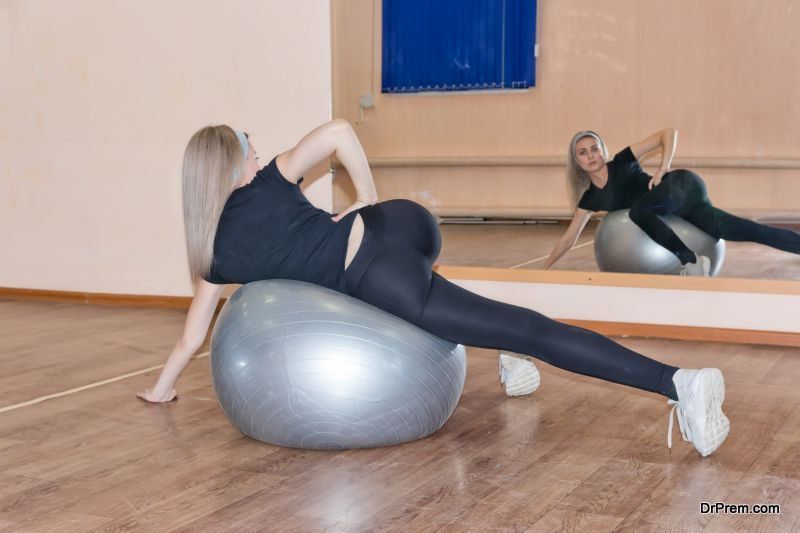 Lower back extension exercises are any exercises that extend your spines. Although sometimes recommended to strengthen the back, these exercises should be avoided if you already have a back pain.
Lower back extension exercises are any exercises that extend your spines. Although sometimes recommended to strengthen the back, these exercises should be avoided if you already have a back pain.
The cause why these exercises may worsen your back pain is because they put uneven force on the lumbar spine, causing the pain to worsen.
9. High impact sports
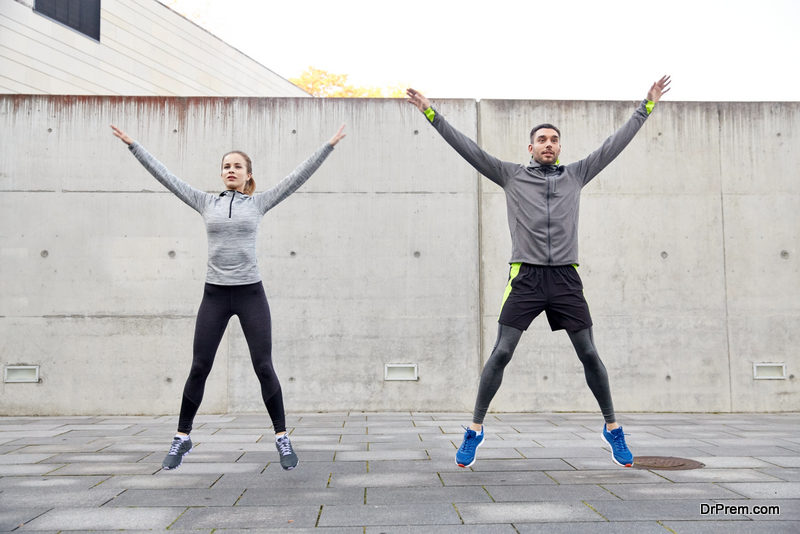 Any kind of sport that involves a lot of jumping, twisting and sudden movements should be avoided at all costs when you are suffering from lower back pains.
Any kind of sport that involves a lot of jumping, twisting and sudden movements should be avoided at all costs when you are suffering from lower back pains.
The obvious reason for this is that it puts your back in unwanted danger of being hurt, be it from overstretching or a sudden jerk.
For this reason, sports like volleyball, football as well as some snow sports should be kept at bay.
Exercises you can do with lower back pain
Stretching exercises help individuals in preventing and rehabilitating soreness and injury. These exercises minimizes the back pain, strengthens the area and increase the flexibility of the body.
1. Neck stretches
 The neck stretches can be done by an individual while remaining seated or by standing. The chin must be lowered until it reaches the chest. The person should feel a slight stretch at the back of the neck when he will be lowering the chin to the chest. This must be done for two or three times. Then the person should switch to a lateral flexion stretch which can be done by lowering the ear toward the shoulder. The person should immediately stop the stretching exercise when he feels there is a tug between the base of the neck and the collarbone. This position should be held for twenty to thirty seconds before stretching toward the opposite shoulder.
The neck stretches can be done by an individual while remaining seated or by standing. The chin must be lowered until it reaches the chest. The person should feel a slight stretch at the back of the neck when he will be lowering the chin to the chest. This must be done for two or three times. Then the person should switch to a lateral flexion stretch which can be done by lowering the ear toward the shoulder. The person should immediately stop the stretching exercise when he feels there is a tug between the base of the neck and the collarbone. This position should be held for twenty to thirty seconds before stretching toward the opposite shoulder.
2. Rocking
For doing this, the person should get down in a position similar to kneeling. The knees should be slightly away from one another and the hands should be under the shoulders. The palms of the person should be kept on the floor and the person should rock back until the buttocks touch the heels of the person. The arms should be stretched to the front. The back of the person must be rounded. The position must be held for a few seconds. Then the person should return to the kneeling position. The abdomen must be dropped until the legs are flat on the floor and the arms are in a push-up position. The pose should be held for a few moments before returning to the kneeling position.
3. Back stretches
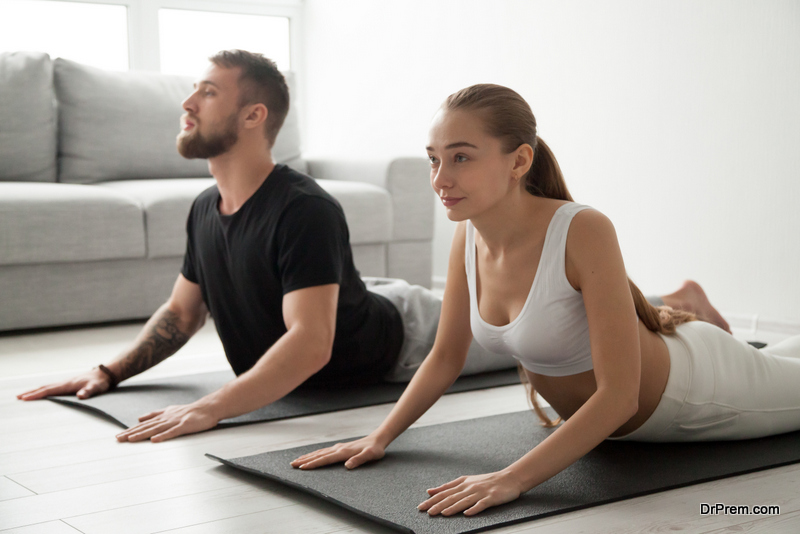 Back stretches can be done by a person either by standing or by remaining seated. However, doctors believe that sitting or lying down is a better option for doing this stretching exercise. This reduces the chances of getting injured during the course of the exercise. The legs should be spread shoulder width apart from one another while remaining in the seated position. The head should next be lowered slowly between the knees and the person should try to reach the floor.
Back stretches can be done by a person either by standing or by remaining seated. However, doctors believe that sitting or lying down is a better option for doing this stretching exercise. This reduces the chances of getting injured during the course of the exercise. The legs should be spread shoulder width apart from one another while remaining in the seated position. The head should next be lowered slowly between the knees and the person should try to reach the floor.
For improving the flexibility, one should lie on the floor and pull both the knees to the chest. While doing this, the person should bring the chin as close as possible to the knees. If anyone has problem doing this pose, the hands can be used to pull the knee to the chest while keeping the heel of the opposite foot firmly on the floor.
4. Stretch and release
Stretch and release is a good stretching exercise to help combat back pain in individuals. For doing this exercise, the person must keep the back straight. The arms must be reached straight up over the head and the shoulders should be lifted. The position must be held for some time and then the arms must be brought down. The person should next bend over the waist and try to reach for the toes. The individual should not over exert as this cannot be reached in one day.
It takes practice on the part of the person to do this. The person should stop at the point where he feels that he is uncomfortable. Next he should slowly straighten and curl up the back. The individual should ensure that the neck and the head are the last to straighten. This exercise can be performed while standing with feet shoulder width apart or by sitting flat on the floor.
5. Hamstring stretch
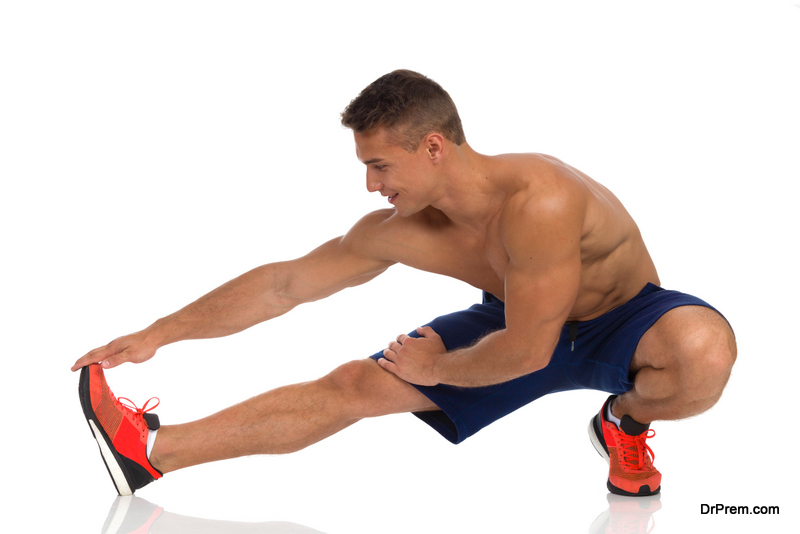 When the backs of your thighs are tight and less flexible, more stress is put on the back portion of your body. For doing this stretching exercise, the person should lie on the floor. The legs should be fully extended and straight. One leg should be brought up without bending the knee. This can be done simply by placing your hands behind your knees and gently pulling them. This same procedure should be repeated on the other leg.
When the backs of your thighs are tight and less flexible, more stress is put on the back portion of your body. For doing this stretching exercise, the person should lie on the floor. The legs should be fully extended and straight. One leg should be brought up without bending the knee. This can be done simply by placing your hands behind your knees and gently pulling them. This same procedure should be repeated on the other leg.
If the person finds that this is difficult for him to do, a towel can be looped around the ankle. Then a pull should be given and this will bring the leg up. This stretch can also be performed while sitting on a chair. For doing that, an individual needs to put another chair across the chair he is sitting on. One leg can be rested on the chair and the hands can be tried to reach the toes. The same method should be repeated on the other leg.
6. Hip stretch
The hips also support the back of your body. Stretching the hip muscles also can help in combating back pain and in maintaining the flexibility of the spine. For doing the hip stretch, an individual must stand with the feet shoulder wide apart from one another. With your right foot take a short step back. The left knee must be bent in the front and the weight shifted back to the right hip. The right leg should be kept up straight, stretching it forward. Do this exercise until a pull is felt in the hip.
7. Pelvic tilt
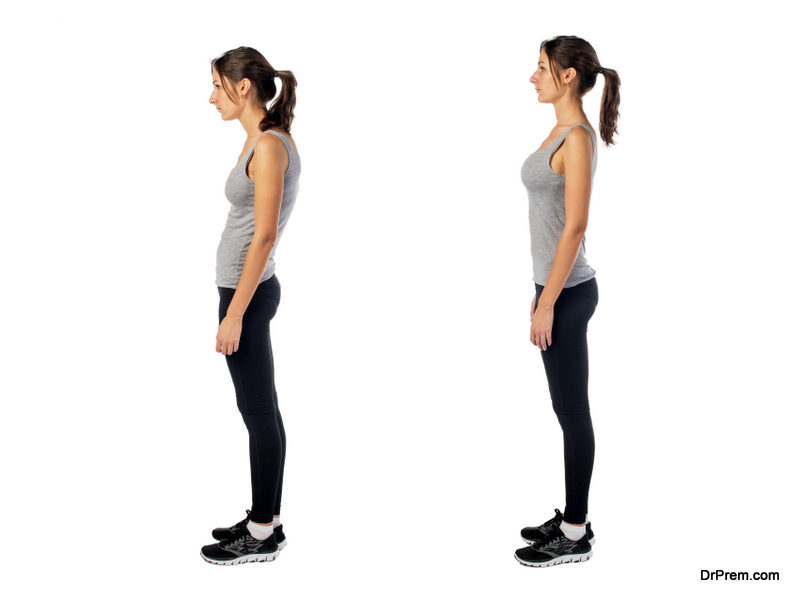 This exercise helps in strengthening the lower back muscles of an individual as it helps gently to stretch the back of the person. The person should lie on the floor with the face upwards. The knees should be bent and the feet should be flat on the floor. The arms must be allowed to relax at the sides of the body. Next a deep breath should be taken. As the person breathes out, he should lower the back on the floor by tilting the pelvis upward. The position must be held before relaxing.
This exercise helps in strengthening the lower back muscles of an individual as it helps gently to stretch the back of the person. The person should lie on the floor with the face upwards. The knees should be bent and the feet should be flat on the floor. The arms must be allowed to relax at the sides of the body. Next a deep breath should be taken. As the person breathes out, he should lower the back on the floor by tilting the pelvis upward. The position must be held before relaxing.
Final words
Do not let lower back pain from keeping yourself fit through various exercises. Admitted, numerous beneficial exercises have to be cut off from your list, but there are enough alternatives for each one of them. So, do not feel disheartened or confused. Lower back pain cannot stop you on your path to health and wellness. You just have to change the route.


